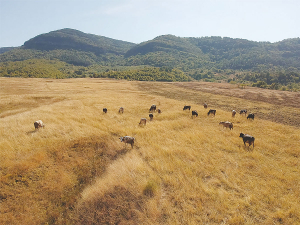Mineral Balance: The hidden key to dairy goat health & production
Most dairy goat farmers focus on getting energy, protein, and fibre right, and fair enough – feed drives milk.
 Heat stress in cows occurs when they are producing more heat than they are able to get rid of through sweating, respiration, or air regulation.
Heat stress in cows occurs when they are producing more heat than they are able to get rid of through sweating, respiration, or air regulation.
Heat stress in dairy cattle is probably the most overlooked seasonal problem here in New Zealand.
Production drops rapidly as the heat increases, and most farmers simply accept this as a normal seasonal issue that they are powerless to address.
The truth is, there are a number of nutritional strategies that can be used in order to mitigate the effects of heat stress.
It is a well-known fact that cows generate heat in order to create the energy to produce milk, and during the summer this will be out in the paddock in the heat of the sun. Heat stress in cows occurs when they are producing more heat than they are able to get rid of through sweating, respiration, or air regulation.
An overabundance of heat in cows can lead to higher levels of stress, which will affect milk production, fertility, as well as increase the risk of other diseases such as lameness, and can also impair immune function.
Untreated heat stress can be fatal, which is why it’s vital to understand the signs of heat stress, and the best ways in which to prevent it. Watch for changes in behaviour, such as seeking shade, panting, drooling, and standing in water or next to troughs, as signs that your cows may be experiencing heat stress.
When cows are suffering heat stress, feed intake is reduced. This will be accompanied by increased panting and drooling culminating in less saliva reaching the rumen, this decreases rumination by disrupting rumen pH. A healthy rumen is needed for milk yield as well as animal health.
It is therefore important that ruminant animals during periods of high humidity are provided with sufficient nutrients in order to counteract heat stress and maintain strong immunity.
By providing your herd with an easily digestible, nutrient-packed animal tonic that can be blended easily into their feed or added into their water, you ensure that they have the correct balance in place to mitigate the effects of this summer heat stress.
Chris Balemi is managing director, Agvance Nutrition Ltd
Three New Zealand agritech companies are set to join forces to help unlock the full potential of technology.
As the sector heads into the traditional peak period for injuries and fatalities, farmers are being urged to "take a moment".
Federated Farmers says almost 2000 farmers have signed a petition launched this month to urge the Government to step in and provide certainty while the badly broken resource consent system is fixed.
Zespri’s counter-seasonal Zespri Global Supply (ZGS) programme is underway with approximately 33 million trays, or 118,800 tonnes, expected this year from orchards throughout France, Italy, Greece, Korea, and Japan.
Animal owners can help protect life-saving antibiotics from resistant bacteria by keeping their animals healthy, says the New Zealand Veterinary Association.
According to analysis by the Meat Industry Association (MIA), New Zealand red meat exports reached $827 million in October, a 27% increase on the same period last year.